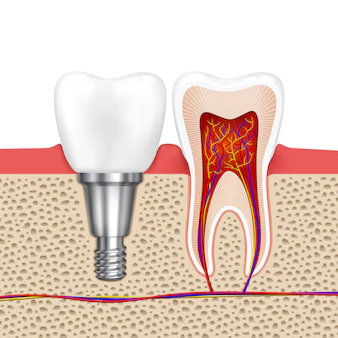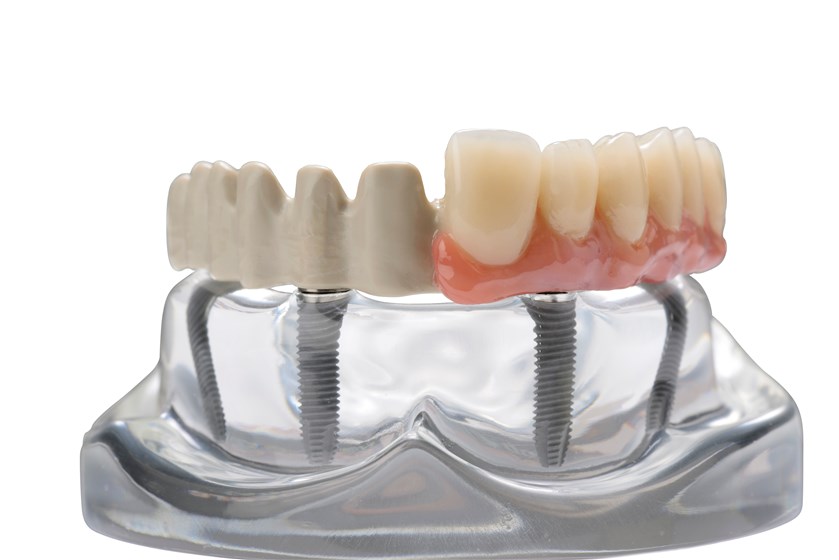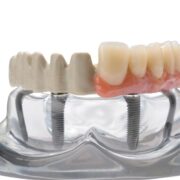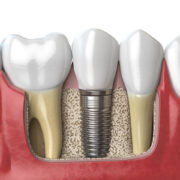Dental implants are a relatively new way to replace missing teeth that involves inserting a metal post into your jawbone instead of an artificial tooth. The operation sounds more complex than it really is, however, and the explanations you’ll find when researching it on the internet can be quite confusing. When you read about how dental implants require drilling holes into your jawbone, inserting titanium screws into your gums, and making molds of your lower third molars so that a dentist back in their office can make custom-made plastic posts to go in the holes—it all sounds so scary! And if you’re anything like me, that puts you off reading further. But here’s the thing: When you break it down into simple words and explainers, it’s not as scary as we might think.
Explaining dental implants in layman’s terms
Before we go into the details of how dental implants work and what the procedure is like, let’s refresh our memories on the basic meanings of a few dental terms.
Tooth: The visible part of the tooth that you can see above the gum line is called the crown. The root of the tooth, which is located below the gum line, is the tooth’s lifeline. It’s what holds the tooth in its rightful place in your mouth.

Toothache: This is a sign that there’s something wrong with a tooth or a dental appliance. You can treat toothache with painkillers, but if it doesn’t go away, visit your dentist as soon as possible.
Tooth decay or tooth disease: This is a bacterial infection that eats at the tooth’s enamel, dentin, and roots of the tooth. You can fight tooth decay with good oral hygiene and by visiting your dentist regularly.
Why dentists recommend dental implants over other options
Why is it that dentists recommend dental implants over bridges and dentures? Well, they’re more effective and they last longer than the other two options.
Bridges: These are made up of artificial teeth that connect to the natural teeth on each side of the gap. The gums above and below the artificial teeth have to be trimmed to allow the teeth to settle in place, which can be painful. Plus, the gums can grow back over time and the bridge can come loose.
Dental implants: These are posts that are inserted into the jawbone to support an artificial tooth. They’re long-lasting, easy to maintain, and look very realistic.
Dentures: The teeth above and below the gap are trimmed to make room for the dentures. They’re not as long-lasting as dental implants, and some people can never adjust to them.
The basics of a dental implant operation
A dentist will make an incision above the gum and below the tissue level to expose the bone. They’ll then drill holes into the jawbone and insert the titanium posts, which fuse with the jawbone over time. The posts are then crowned with porcelain or ceramic teeth-like posts.
The gums are sutured closed and a soft retainer is placed in the mouth to ensure that the gums heal without any issues. Once the gums heal, the retainer is removed and a dentist puts a wax mold on your teeth to create an artificial tooth post that fits on the implant.
The benefits of dental implants
- They look and feel very natural.
- Once they heal, they don’t cause any pain or discomfort.
- They don’t require any special care.
- They don’t stain or smell.
- They’re long-lasting and don’t wear out like dentures.
- You can eat whatever you want without having to worry about your teeth coming loose or breaking.
- Some people who have dental implants say that they don’t even notice them, especially after a few years.
Advantages of dental implants
Improved appearance: Dental implants look and feel like your own teeth. And because they are designed to fuse with bone, they become permanent. Improved speech. With poor-fitting dentures, the teeth can slip within the mouth causing you to mumble or slur your words. Dental implants allow you to speak without the worry that teeth might slip. Improved comfort. Because they become part of you, implants eliminate the discomfort of removable dentures.

Easier eating: Sliding dentures can make chewing difficult. Dental implants function like your own teeth, allowing you to eat your favorite foods with confidence and without pain. Improved self-esteem. Dental implants can give you back your smile and help you feel better about yourself.
Improved oral health: Dental implants don’t require reducing other teeth, as a tooth-supported bridge does. Because nearby teeth are not altered to support the implant, more of your own teeth are left intact, improving long-term oral health. Individual implants also allow easier access between teeth, improving oral hygiene.
Disadvantages of dental implants
The surgery is expensive and out-of-pocket. The healing process can be long, especially if you have to undergo bone grafting. The surgery is painful and uncomfortable. The implant posts can be easily broken if you don’t take care of them. The teeth are more likely to chip or break if you don’t take care of them properly.
Your implant is only the part of the tooth that supports a fixed restoration on top of it. Wearing a protective bite splint could help you get as much time as possible out of your porcelain dental work.
Conclusion
Dental implants are a fantastic option for people who have lost their teeth. They’re long-lasting, easy to maintain and look very natural. They’re also very affordable compared to other dental procedures, and once you recover from the surgery, you don’t have to worry about your teeth falling out ever again. If you’re considering getting dental implants, the best thing you can do is to arm yourself with knowledge. Read up on dental implants and ask as many questions as you need to feel comfortable with the procedure.






